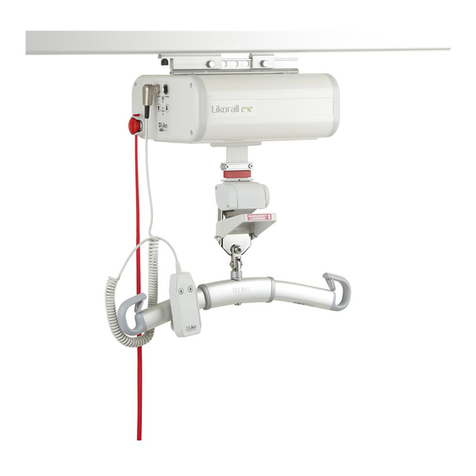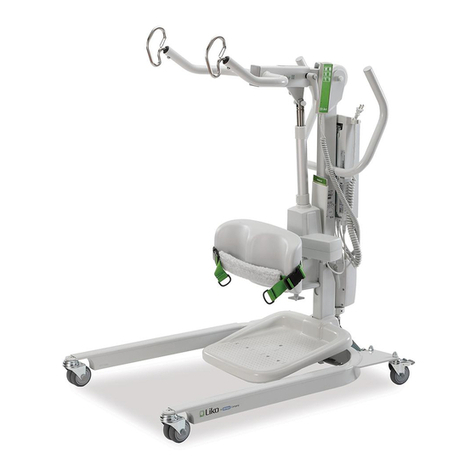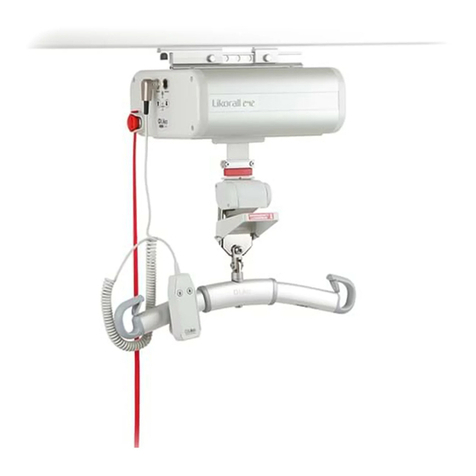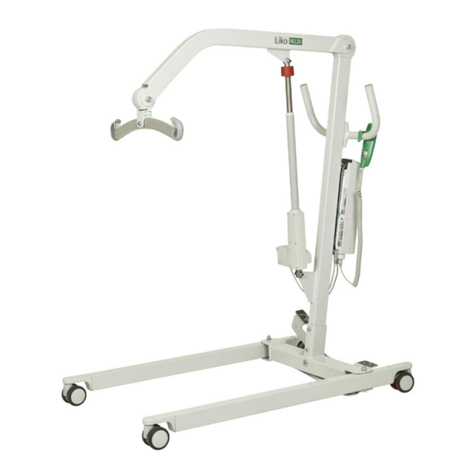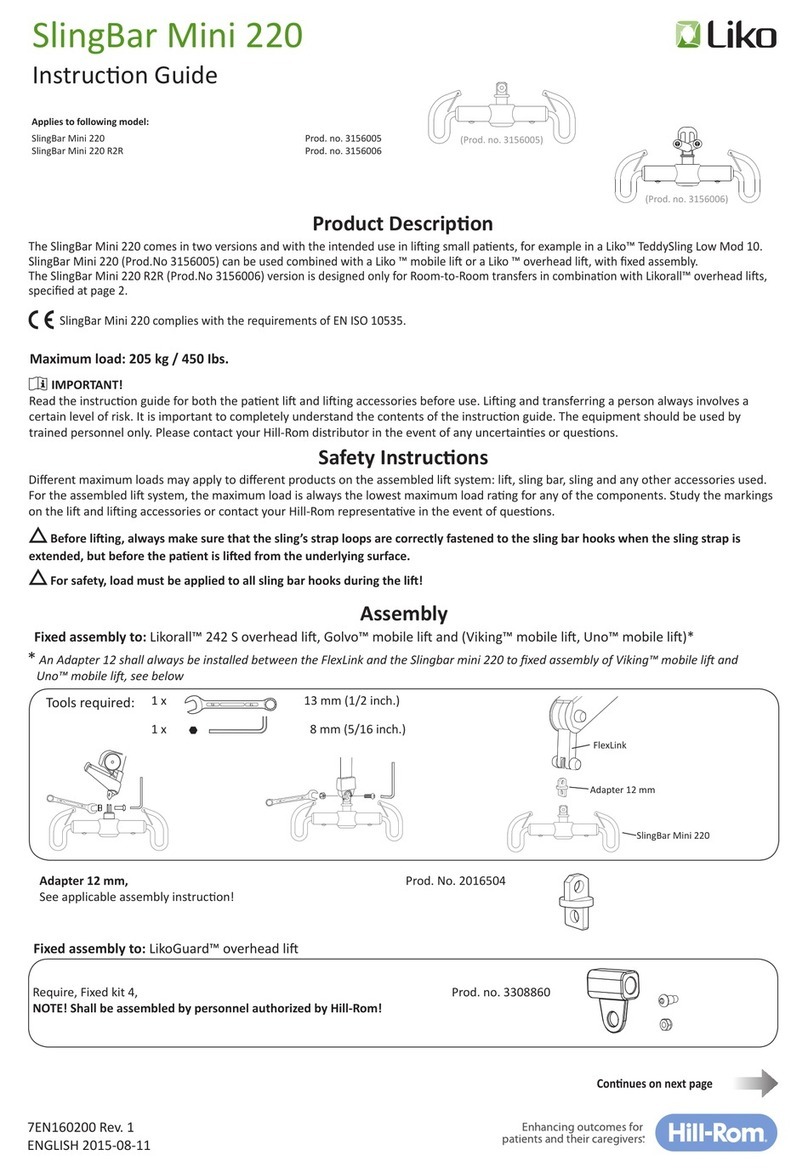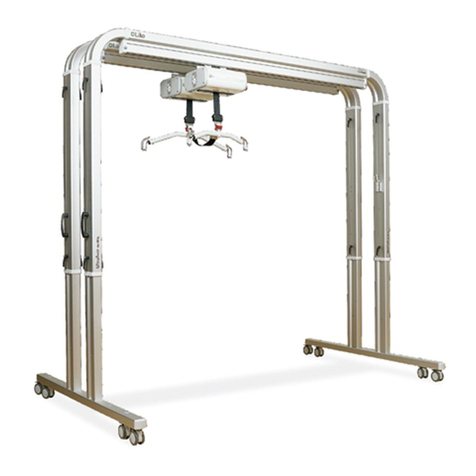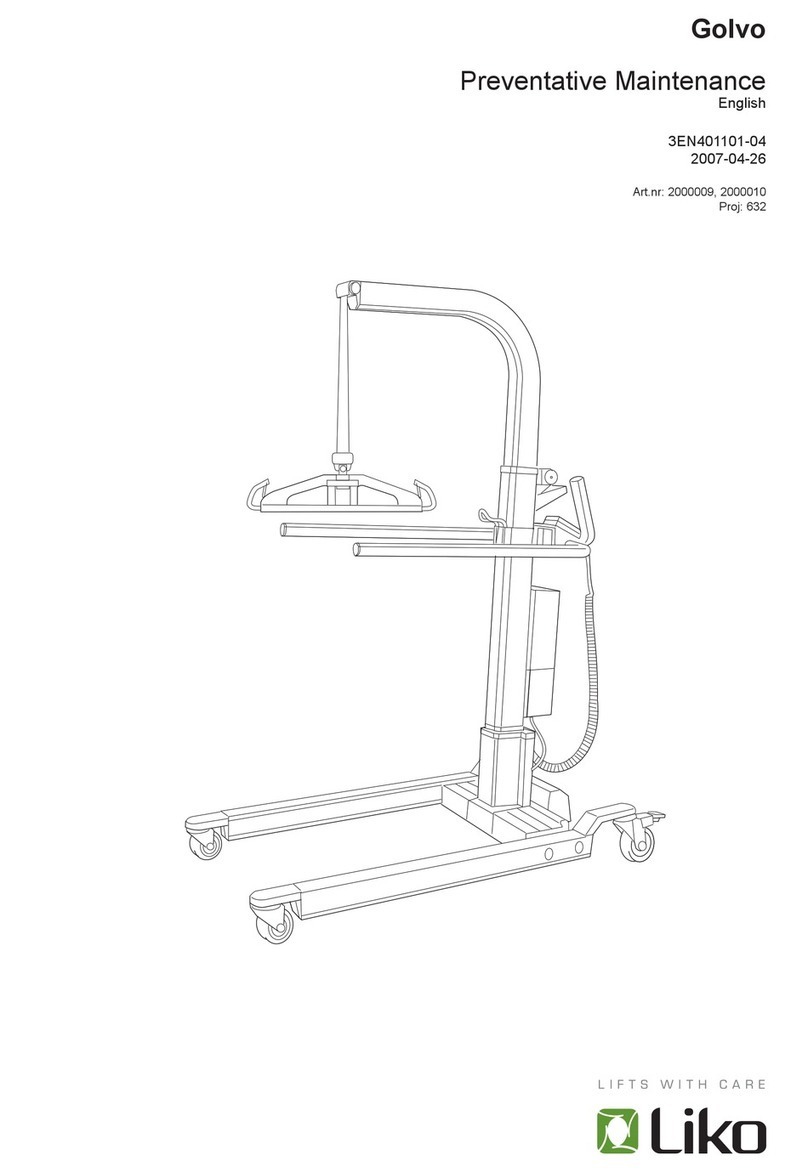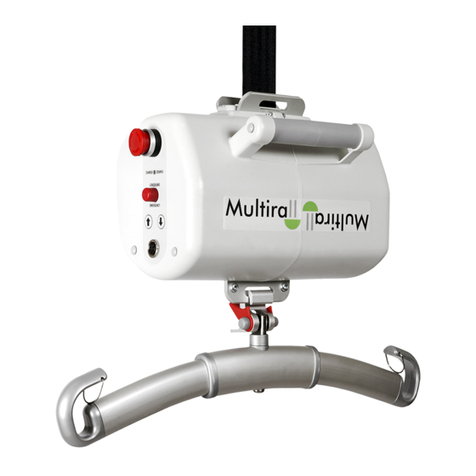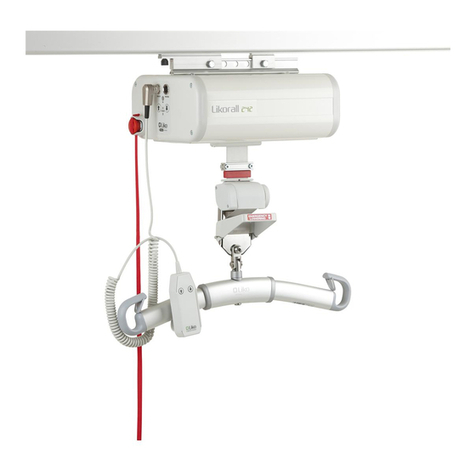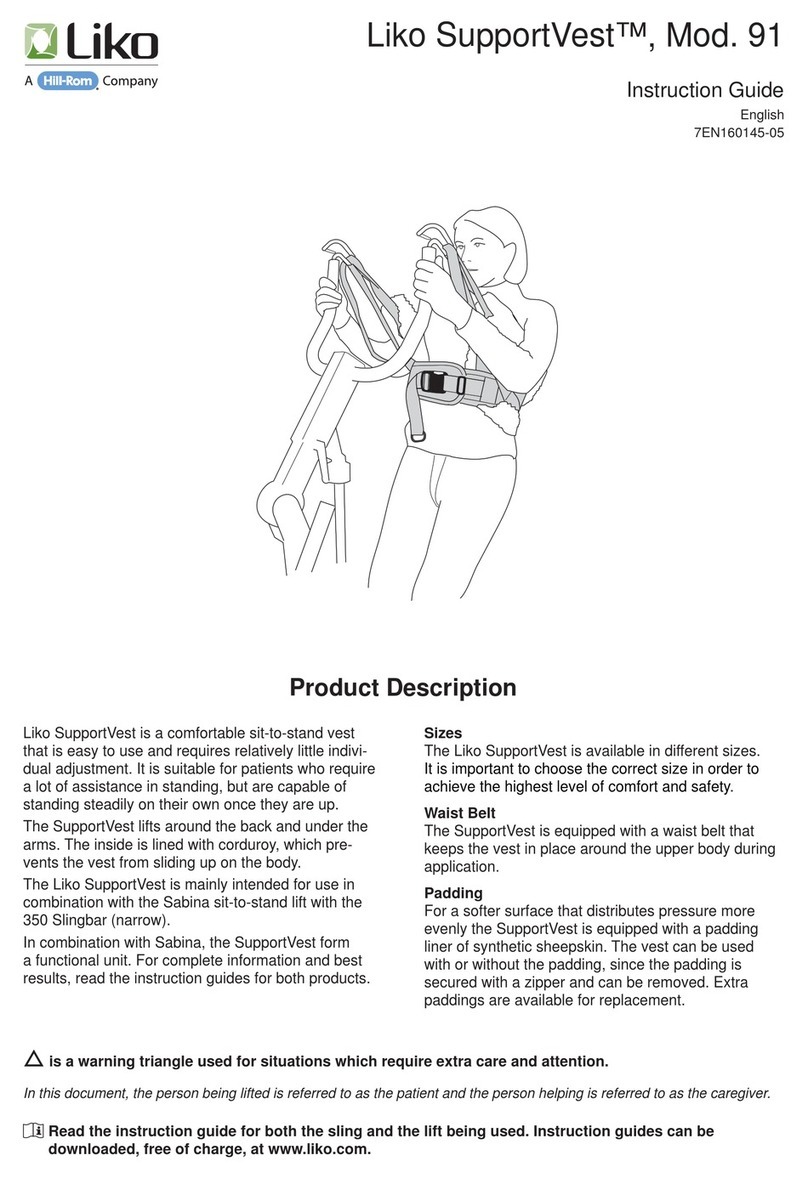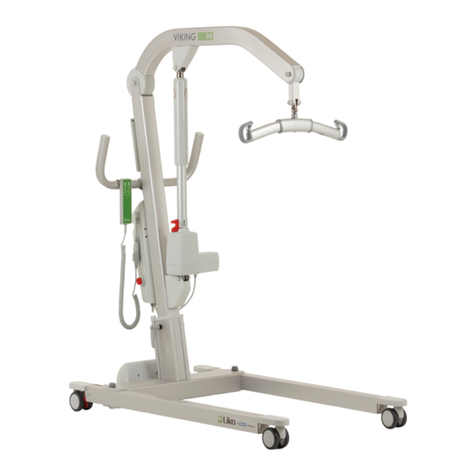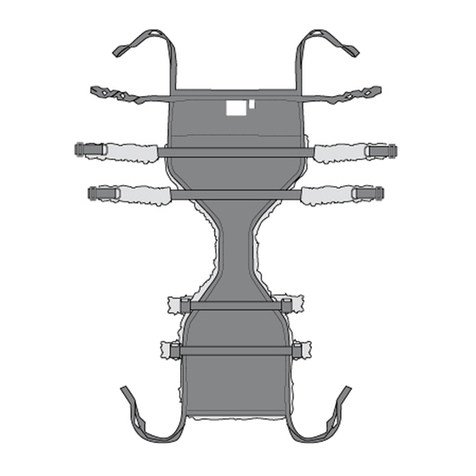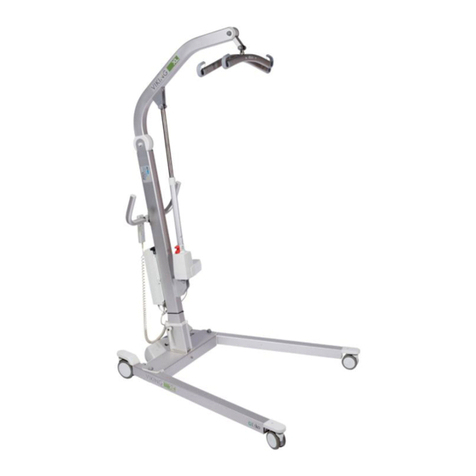Laundering: See the sling´s product label.
Medical technical Class I product
© Copyright Liko AB 2010-09
Code:
1 Recommended
2 Possible
3 Not advisable
4 Inappropriate
Liko HygieneVest has been tested by an accredited test institute and complies with all requirements for MDD Class-I products
and the harmonized standard EN ISO 10535.
Liko's products are constantly being updated and rened. Liko reserve the right to change aspects of the products without
prior notice. Contact your local Liko representative for updated information and advice.
Important!
Lifting and transferring a patient always involves a degree
of risk. Study the instruction guides for both lift systems
and accessories carefully. A complete understanding of the
contents of instruction guides is essential.
Only trained personnel should use the equipment.
Make certain that the lift accessories are appropriate for the
lift you are using and for the lifting situation. Exercise caution
and care when using lift equipment and accessories.
As a caregiver, you are responsible for the patient’s safety.
You must be well informed of the patient’s condition and
ability to manage the lifting situation.
Inspect the sling regularly, especially after laundering.
Check carefully for wear and damage to seams, fabric,
straps and strap loops. Never use damaged accessories!
When in doubt, contact the manufacturer or supplier.
Mini 220
Slim 350
Standard 450
Wide 670
Recommended combinations of Liko
HygieneVest and Liko’s sling bars:
Universal 350
Universal 450
Twinbar 670
Teddy HygieneVest, XXS 50, 55 1 1 1 1 1 3 3 4
HygieneVest/Teddy HygieneVest, XS 50, 55 1 1 1 1 1 3 3 4
HygieneVest, S 50, 55 1 1 1 1 1 3 3 3
HygieneVest, M 50 2 1 1 1 1 3 2 2
HygieneVest, L 50 2 1 1 1 1 3 2 2
HygieneVest, XL 50 3 2 2 1 1 2 2 2
HygieneVest, XXL 50 4 2 2 1 1 2 1 1
HygieneVest, XXXL 50 4 3 3 1 1 2 1 1
HygieneVest High Back, M 55 2 1 1 1 1 3 3 3
HygieneVest High Back, L 55 2 1 1 1 1 3 2 3
HygieneVest High Back, XL 55 2 1 1 1 1 2 2 3
The above table summarizes the recommendations for each size. Different sling bar sizes will result in different
degrees of pressure around the chest. Test various sizes until you nd the most appropriate one.
Combinations with Liko HygieneVest and Cross-bar, Cross-bar 450/670 or Side bars is not appropriate.
www.liko.com
Manufacturer:
Liko AB
SE-975 92 Luleå
Sweden
Expected Life Time
The product has an expected life time of 1-5 years during normal use. Life time varies depending on fabric, use frequency,
washing procedure, and weight carried.
Periodic Inspection
The product must be inspected at least once every 6 months. More frequent inspections might be required if the products are
used or washed more often than normal. See Liko’s protocol Periodic Inspection for the respective product.
Care and Maintenance
Combinations
Combinations of accessories/products other than those recommended by Liko can result in risks for the safety of the patient.
In those cases where another manufacturer recommends Liko’s accessories/products in combination with their or others’
accessories/products, and the combinations are not approved by Liko, that manufacturer assumes the responsibility for that
combination. Liko then refers to the responsible manufacturer’s instruction guides and recommendations concerning usage,
maintenance, cleaning, checking and inspection of the combination in order to full the EN ISO 10535 requirements.
Other Combinations
Universal 600
